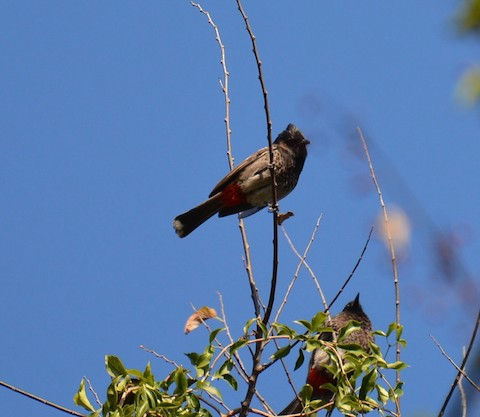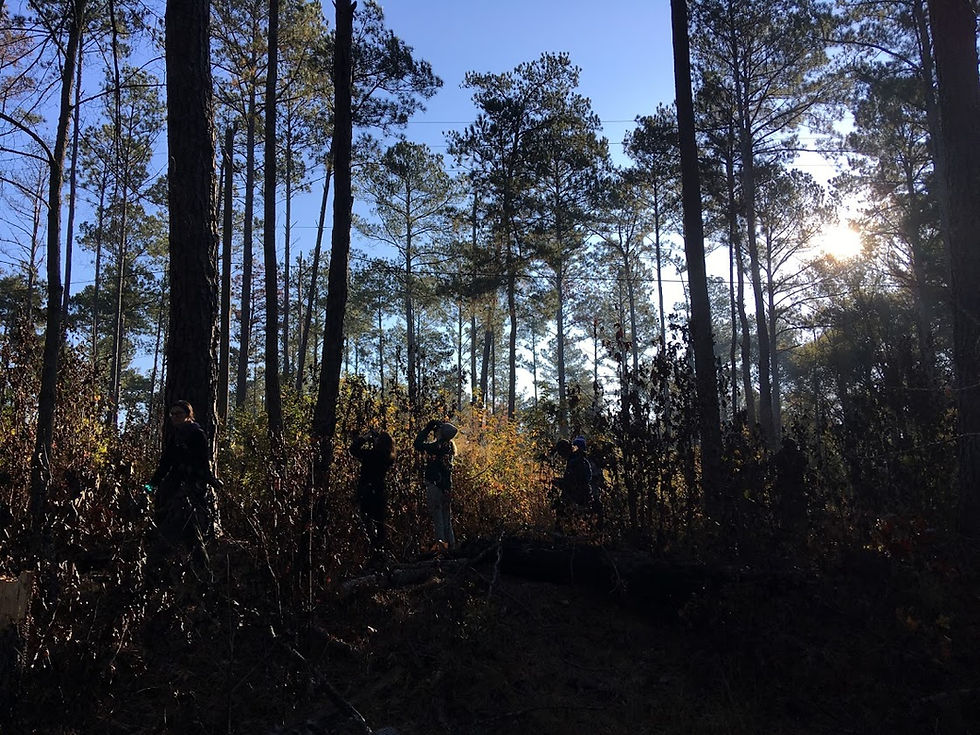Jersey Boys..er Birds
- birdsnbrews

- Jan 13, 2020
- 4 min read
Updated: Jan 29, 2020
Believe it or not, New Jersey is one of the best states for seeing fall migration. So on the second weekend of September, when migration begins to peak, we packed up and headed towards a state I knew almost nothing about, except for the annoying cast of the Jersey Shore.
We started out trip Friday evening at the Franklin Parker Preserve, located in the heart of the Pine Barrens. It's also well known for it's herps...well used to be. We flipped just about everything we saw, but didn't see anything. Bird diversity was scarce too, but that's the risk with evening birding. The habitat itself was very unique, and it didn't look like the typical southeastern pine forest I'm used to. It opened up into a unique bog-like habitat.

We began the next morning at Higbee Beach WMA on Cape Island, one of the most famous spots for fall migration. We had very high hopes going in, expecting to see flurries of warblers falling like rain around us. However..that was not quite the case. After birding for a little on our own, we headed towards the platform where a Cape May Bird Observatory Watcher was stationed. We explained our Big Year and our targets, to which he immediately exclaimed "Aw, you should've been here last weekend! We were seeing huge flocks of warblers all over due to strong winds. The mild weather this weekend will probably cause a bit of a lull." Not letting the news get to us, we continued birding the platform before hiking off on our own for a while. We were a little disappointed at the sheer amount of invasives taking over such a largely visited park. Surely, they'd have enough money to at least try treating it...anyways I digress. Objectively, it was great birding. We saw several warbler species - American Redstarts, Tennessee Warblers, Worm-eating Warblers, and Northern Waterthrushes. But we missed out on several other warblers, thrushes, and orioles we were hoping for. We moved on to the famous Hawkwatch platform in Cape May Point State Park. We scanned the pond, and then checked the beach. Besides a few teal and a few common gull species, we didn't see anything new here. This would be the theme of most of the trip. However, we did find a gorgeous black rat snake, so that made things a little better.

We had bought boat tickets for a whale watching tour that went west out of the Cape. We wanted to use the opportunity to bolster our pelagic numbers. We tugged along optimistically through the marshes heading out towards sea. Once we finally reached sea, the boat merely hugged the coastline, which was quite frustrating. The captain was following a pod of bottle-nosed dolphins for what seemed like a lifetime before we finally headed toward open waters. We were clearly the only birders on the boat. To our disappointment, besides a few common gulls and terns, there wasn't a single pelagic bird in sight. We kept frantically scanning to the point I was seeing floaters in my eyes. Peter did get a glimpse of a green sea turtle, which was definitely a highlight of the trip (for him...I didn't see it).
We exited the boat, a bit grumpy, and headed towards our next hotspot: South Cape May Meadows. A short trail leads from a wetland towards the beach and back around. Several birders were mulling about, and we found a birding tour group at the coast. However, they were very focused on watching a dolphin far off the coastline, and managed to totally miss a large flock of Skimmers that went right by them. Sometimes, the thought of paying for a wildlife tour group like that makes me scratch my head. With nothing new for our year here, we moved on.
Edwin B Forsyth NWR was my favorite spot on the whole trip. The 8 mile wildlife drive winds through a huge marsh. We had wonderful looks at a Clapper Rail (which we admittedly thought was a Virginia Rail for a while because one had been reported at the same locale), rafts of ducks, gulls, and terns, and one really cool experience: as we were watching some peeps along the sand, a Sharp-shinned Hawk silently flew in and grabbed a Semipalmated Sandpiper! We also finally got a new bird for the year - Gull-billed Tern!


Our last shot was at Sandy Hook, a barrier spit in Monmouth County, owned and managed by the National Park Service. We drove towards the end of the spit, which we were told was the best spot for migrants. After walking around for the better part of an hour, we were coming up empty. We hiked towards the beach and walked up an overlook - all was quiet. Disappointed, we started hiking back towards the car, until we saw another birder unloading a scope from his trunk. We stopped to say hi, and he told us he knew the park well. He directed us towards a birdier spot a ways down the beach into a small forested area. We followed his directions and alas, a new bird! We watched an Olive-sided Flycatcher sallying from a snag. We continued up and things began to pick up. We were finally seeing migrants - Magnolia Warblers, American Redstarts, and Blackpoll Warblers. Unfortunately, the flycatcher was the only new bird of the morning, but every one counts this late into the game! Our time was up in New Jersey, and we had to book it towards the airport. I'll definitely be visiting Cape May again, but I'll be hoping for some windier conditions...








Comments